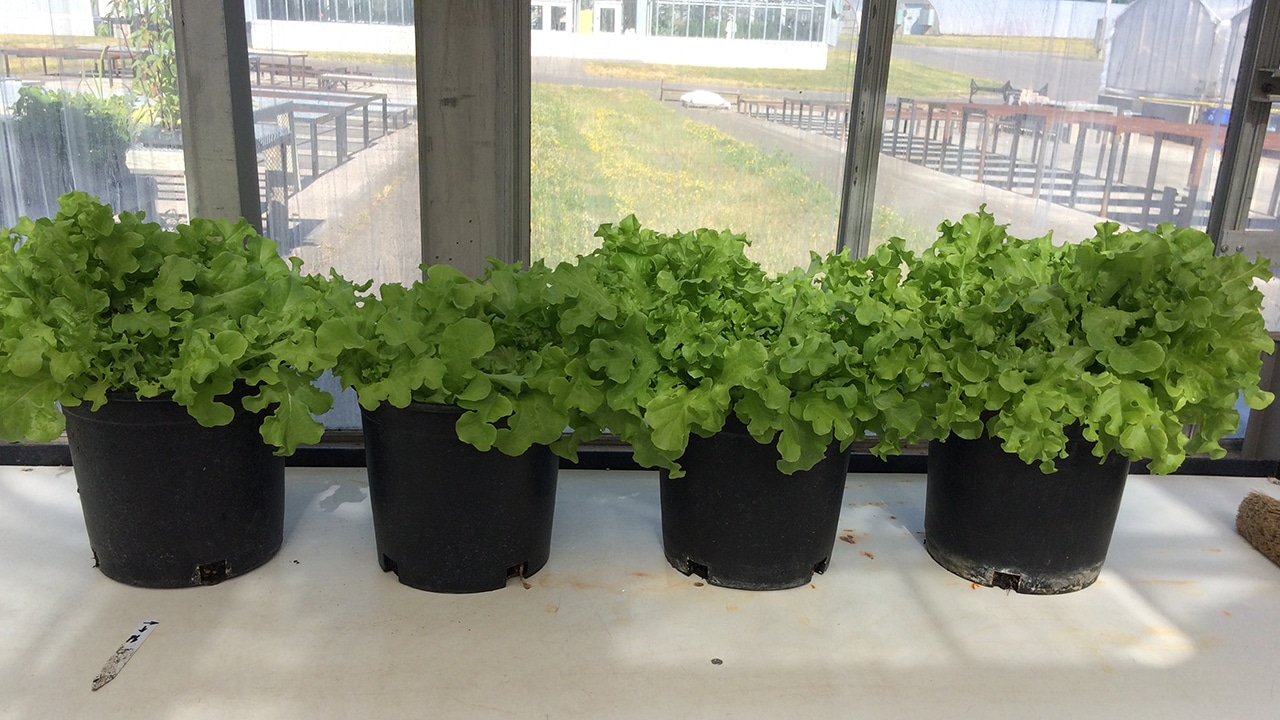Posted on March 17, 2021 in ASRC News, Environmental Sciences Initiative
Urban community gardeners use a range of best practices to grow healthy crops and limit contamination from metals like lead. While most crops take up very little lead through their roots, especially when soil pH is around neutral, past research has shown that leafy greens in particular can have lead-containing particles attached to their surfaces. Where do these surface contaminants come from?

Writing in the Journal of Environmental Management, a team of researchers evaluated the impacts of garden processes on lead concentrations on lettuce. The collaboration included Sara Perl Egendorf, Zhongqi Cheng, and Anna Minsky from the ASRC, The Graduate Center, CUNY and Brooklyn College; Henry Spliethoff from the New York State Department of Health; Hannah Shayler, Jonathan Russell-Anelli, and Murray McBride from the Cornell University School of Integrative Plant Science; and Thomas King from the New York State Department of Agriculture and Markets. They estimated contributions to lead concentrations of lettuce due to root uptake, splash from the surrounding soil, and deposition from the atmosphere (rain or fallout of dry particles) on lettuces grown in a field and greenhouse in Ithaca, New York, and a community garden in New York City.
The results were striking. When evaluating lettuces grown in soil containing high levels of lead (1150 parts per million (ppm)), soil splash and atmospheric deposition were responsible for 88% of the Pb content on washed lettuce leaves in Ithaca, and 93% of the Pb in New York City. In all cases, splash of soil particles was the main contributor of lead on lettuce. However, it was also shown that lead contamination due to splash could be significantly limited by using a soil cover like mulch.
“This is a simple yet extremely important finding,” says Egendorf, lead author of the study. “Mulch has been shown to prevent weed growth, reduce erosion, and retain soil moisture, and here we show that it can also be highly effective at limiting crop contamination.”
While the authors strongly recommend mulching as an evidence-based best practice to reduce lead exposure, they want gardeners to prioritize growing crops in clean soil, and to continue a range of research-informed recommendations to ensure that gardeners enjoy the rewards of growing their own healthy food while minimizing risks from exposure to contaminants (For more information, see the New York State Department of Health website and see and Cornell’s Healthy Soils, Healthy Communities project.) Garden soils containing elevated lead were used only by researchers and were replaced with clean soils by NYC Parks GreenThumb, the largest community gardening program in the country. No experimental lettuces were consumed.
As more people become interested in growing their own crops at home or in community gardens as a result of coronavirus-related changes to food supply, lifestyle, and other factors, it is extremely important that all growers are aware of potential garden risks and that they use practical and affordable approaches to ensure their crops are as healthy as possible.
